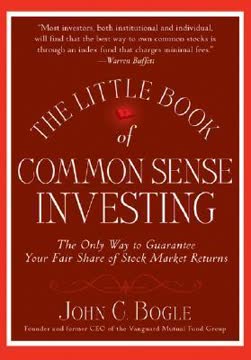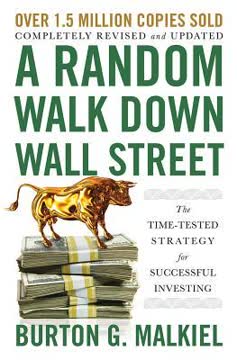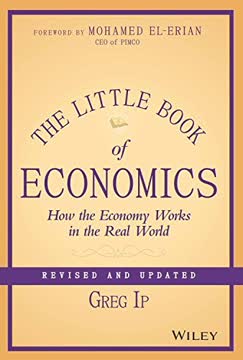Key Takeaways
1. The Fundamentals of Economic Growth: People, Capital, and Ideas
"Economic growth springs from better recipes, not just from more cooking," says Paul Romer, a Stanford University economist.
Population drives workforce. A country's economic growth depends primarily on its population, which determines the size of its workforce. As the labor force grows, so does the economy's potential output.
Capital fuels productivity. Investment in physical and human capital is crucial for increasing productivity. This includes infrastructure, machinery, and education, which enable workers to produce more goods and services.
Ideas spark innovation. The most powerful driver of economic growth is the generation and implementation of new ideas. These can be:
- New technologies
- Improved business processes
- Novel products or services
Ideas allow countries to overcome diminishing returns and achieve sustained growth by combining existing resources in more efficient ways.
2. Understanding Business Cycles and Economic Indicators
"Every business expansion eventually dies. Only the cause of death changes."
Cycles are inevitable. Business cycles consist of periods of expansion followed by contraction. These fluctuations are driven by changes in:
- Consumer spending
- Business investment
- Government spending
- Exports
Indicators guide predictions. Economic indicators help forecast future economic conditions:
- Leading indicators: Stock market performance, consumer confidence
- Coincident indicators: GDP, employment rates
- Lagging indicators: Unemployment rate, inflation
Recessions have varying causes. While no two recessions are identical, common triggers include:
- Asset bubbles bursting
- Oil price shocks
- Monetary policy tightening
- Financial crises
Understanding these cycles and indicators is crucial for businesses, investors, and policymakers to make informed decisions and prepare for economic changes.
3. The Labor Market: Employment, Unemployment, and Wages
"The job market is a wonderfully chaotic Petri dish in which new jobs are constantly being created or destroyed."
Employment dynamics. The labor market is in constant flux, with jobs being created and destroyed continuously. Factors influencing employment include:
- Technological advancements
- Globalization
- Demographic shifts
- Economic cycles
Unemployment nuances. The unemployment rate is a key economic indicator, but it's important to understand its components:
- Frictional unemployment: People between jobs
- Structural unemployment: Skills mismatch
- Cyclical unemployment: Due to economic downturns
Wage determinants. Wages are primarily influenced by:
- Productivity
- Supply and demand for specific skills
- Bargaining power of workers
- Government policies (e.g., minimum wage laws)
Understanding these labor market dynamics is crucial for policymakers, businesses, and individuals to navigate the evolving employment landscape.
4. Inflation and Deflation: Their Causes and Consequences
"Inflation is always and everywhere a monetary phenomenon."
Inflation basics. Inflation, the continuous rise in prices, is typically caused by:
- Excess money supply
- Increased demand outpacing supply
- Rising production costs
Its effects include:
- Reduced purchasing power
- Uncertainty in long-term planning
- Potential economic instability
Deflation dangers. Deflation, or falling prices, can be equally harmful:
- Discourages spending and investment
- Increases the real value of debt
- Can lead to a deflationary spiral
Central bank role. Central banks aim to maintain price stability by:
- Adjusting interest rates
- Managing money supply
- Communicating future policy intentions
Understanding these phenomena helps individuals and businesses make informed financial decisions and allows policymakers to maintain economic stability.
5. Globalization and International Trade
"Trade does not make Americans collectively poorer, but it does alter the balance between winners and losers."
Trade benefits. Globalization and international trade offer numerous advantages:
- Increased consumer choice
- Lower prices through competition
- Access to larger markets for businesses
- Spread of technology and ideas
Challenges and adjustments. However, globalization also presents challenges:
- Job displacement in certain sectors
- Increased economic interdependence
- Cultural homogenization concerns
Policy considerations. Governments must balance the benefits of free trade with protecting domestic industries and workers through:
- Trade agreements
- Tariffs and quotas
- Worker retraining programs
- Currency policies
Understanding the complexities of globalization helps individuals, businesses, and policymakers navigate the interconnected global economy.
6. The Role of Government in the Economy
"The government's solutions may not be efficient for the economy or fair for people, but simply what's politically palatable."
Economic functions. Governments play several crucial roles in the economy:
- Providing public goods (e.g., infrastructure, national defense)
- Regulating markets and enforcing contracts
- Redistributing income through taxes and transfers
- Stabilizing the economy during crises
Policy tools. Governments use various tools to influence economic outcomes:
- Fiscal policy: Government spending and taxation
- Monetary policy: Interest rates and money supply (via central banks)
- Regulatory policy: Rules governing business practices
Balancing act. Government intervention involves trade-offs between:
- Economic efficiency and social equity
- Short-term stability and long-term growth
- Different interest groups' demands
Understanding the government's role helps citizens make informed political choices and businesses navigate the regulatory landscape.
7. Monetary Policy and the Federal Reserve
"The Federal Reserve has the rare talent of making even the toughest topics easy to understand."
Fed's dual mandate. The Federal Reserve, the U.S. central bank, aims to:
- Maintain price stability (low inflation)
- Promote maximum employment
Policy tools. The Fed uses several tools to achieve its goals:
- Setting the federal funds rate
- Open market operations
- Reserve requirements
- Forward guidance
Economic impact. Monetary policy affects the economy through various channels:
- Influencing borrowing costs for businesses and consumers
- Affecting asset prices and wealth
- Shaping expectations about future economic conditions
Understanding monetary policy is crucial for investors, businesses, and policymakers to anticipate economic trends and make informed decisions.
8. Fiscal Policy: Government Spending and Taxation
"Presidents live or die by the economy."
Fiscal policy basics. Government spending and taxation decisions impact the economy by:
- Influencing aggregate demand
- Redistributing income
- Providing public goods and services
Policy tools. Key fiscal policy instruments include:
- Discretionary spending (e.g., infrastructure projects)
- Automatic stabilizers (e.g., unemployment benefits)
- Tax rates and structure
Economic effects. Fiscal policy can have various impacts:
- Short-term: Stimulate or cool down the economy
- Long-term: Affect economic growth and debt levels
- Distributional: Change income inequality
Understanding fiscal policy helps citizens evaluate government performance and businesses anticipate economic conditions.
9. The National Debt and Its Implications
"Debt is like Ritalin. At the right dosage it can jolt a lethargic economy out of recession. Overdosing, as Greece discovered, can bring on seizure."
Debt dynamics. The national debt accumulates when government spending exceeds revenue over time. Key considerations include:
- Debt-to-GDP ratio
- Interest payments as a share of the budget
- Who holds the debt (domestic vs. foreign investors)
Economic impact. High levels of national debt can:
- Crowd out private investment
- Increase borrowing costs
- Limit fiscal flexibility during crises
- Potentially lead to a debt crisis
Policy implications. Managing the national debt involves difficult trade-offs:
- Short-term economic stimulus vs. long-term fiscal sustainability
- Spending cuts vs. tax increases
- Intergenerational equity concerns
Understanding the national debt is crucial for evaluating fiscal policy and anticipating long-term economic trends.
10. The Financial System: Banks, Capital Markets, and Innovation
"Finance is as essential to economic growth as it is unpopular among Congressmen."
System components. The financial system consists of:
- Banks and shadow banks
- Capital markets (stocks, bonds)
- Derivatives and other financial instruments
Economic functions. The financial system:
- Channels savings to productive investments
- Facilitates risk management
- Provides liquidity
- Enables price discovery
Innovation and risk. Financial innovation can:
- Improve efficiency and risk management
- Create new investment opportunities
- Sometimes lead to instability and crises
Understanding the financial system is crucial for:
- Investors making portfolio decisions
- Businesses seeking capital
- Policymakers regulating financial activities
A well-functioning financial system is essential for economic growth, but requires careful oversight to manage potential risks.
Last updated:
FAQ
What's "The Little Book of Economics" about?
- Overview: "The Little Book of Economics" by Greg Ip is a comprehensive guide that explains how the economy functions in the real world. It covers fundamental economic concepts and their impact on everyday life.
- Purpose: The book aims to demystify economics, making it accessible and engaging for readers who may find the subject complex or intimidating.
- Content: It explores various topics, including business cycles, inflation, globalization, and the role of government and central banks in the economy.
- Target Audience: The book is intended for citizens and investors on Main Street who want to understand economic forces without delving into dense academic jargon.
Why should I read "The Little Book of Economics"?
- Clarity and Simplicity: Greg Ip has a talent for making complex economic topics easy to understand, using clear explanations and memorable examples.
- Relevance: The book provides insights into how economic forces shape the world, which is crucial for making informed personal and financial decisions.
- Engagement: It offers a mix of broad overviews and detailed discussions, making economics both informative and enjoyable.
- Practical Knowledge: Readers gain tools to understand economic trends and policies that affect their lives and investments.
What are the key takeaways of "The Little Book of Economics"?
- Economic Growth: Long-term growth depends on population and productivity, with ideas and innovation playing a crucial role in enhancing productivity.
- Business Cycles: The economy goes through cycles of expansion and recession, influenced by consumer and business spending and Federal Reserve policies.
- Globalization: The interconnectedness of global markets affects local economies, with trade and capital flows playing significant roles.
- Government's Role: Fiscal and monetary policies are essential in managing economic stability, with the Federal Reserve playing a pivotal role in controlling inflation and supporting growth.
What are the best quotes from "The Little Book of Economics" and what do they mean?
- "Supply creates its own demand." This quote, attributed to Jean-Baptiste Say, highlights the idea that production of goods and services generates the income necessary to purchase them, emphasizing the self-regulating nature of markets.
- "Inflation is always and everywhere a monetary phenomenon." This quote by Milton Friedman underscores the belief that inflation is primarily caused by an increase in the money supply.
- "Creative destruction." Coined by Joseph Schumpeter, this term describes the process by which new innovations replace outdated industries, driving economic growth and progress.
- "The economy’s arteries, our financial system, is clogged." This metaphor by Ben Bernanke illustrates the critical role of the financial system in maintaining economic health and the dangers of its dysfunction.
How does Greg Ip explain economic growth in "The Little Book of Economics"?
- Population and Productivity: Economic growth hinges on a country's productive potential, which depends on its population and productivity levels.
- Role of Ideas: Innovation and new ideas are crucial for pushing the technological frontier and enhancing productivity, leading to economic growth.
- Investment in Capital: Equipping workers with more capital, such as technology and infrastructure, increases their productivity and contributes to growth.
- Government's Role: Policies that support education, rule of law, and market efficiency are essential for nurturing growth and innovation.
What does "The Little Book of Economics" say about business cycles?
- Nature of Cycles: Business cycles are regular fluctuations in economic activity, characterized by periods of expansion and recession.
- Influencing Factors: Cycles are driven by consumer and business spending, which are influenced by expectations, interest rates, and external shocks.
- Federal Reserve's Role: The Fed often plays a key role in managing cycles by adjusting interest rates to control inflation and stimulate growth.
- Predicting Cycles: While predicting recessions is challenging, spotting imbalances such as excessive debt or asset bubbles can provide early warnings.
How does "The Little Book of Economics" address globalization?
- Interconnected Markets: Globalization involves the increased flow of goods, services, people, and capital across borders, integrating economies worldwide.
- Trade Benefits: While exports are important, imports enrich consumers by providing more choices and competitive prices.
- Impact on Jobs: Globalization can lead to job displacement in certain sectors but also creates opportunities in others, particularly in services and high-tech industries.
- Challenges and Opportunities: Countries must adapt to globalization by enhancing skills and productivity to remain competitive in the global market.
What role does the government play in the economy according to "The Little Book of Economics"?
- Fiscal Policy: Government spending and taxation are used to influence economic activity, stabilize the economy, and redistribute wealth.
- Monetary Policy: The Federal Reserve controls the money supply and interest rates to manage inflation and support economic growth.
- Regulation: Government agencies regulate industries to ensure fair competition, protect consumers, and maintain financial stability.
- Public Services: The government provides essential services and infrastructure that the private sector may not supply efficiently, such as defense and education.
How does "The Little Book of Economics" explain inflation and deflation?
- Inflation Causes: Inflation is often driven by an increase in the money supply or demand exceeding supply, leading to rising prices.
- Deflation Dangers: Deflation, or falling prices, can be more destructive as it leads to reduced spending, lower wages, and increased debt burdens.
- Federal Reserve's Role: The Fed aims to maintain stable inflation, typically targeting a rate between 1% and 3%, to ensure economic stability.
- Expectations Matter: Inflation expectations can become self-fulfilling, influencing wage and price-setting behavior across the economy.
What insights does "The Little Book of Economics" provide on financial crises?
- Recurring Nature: Financial crises are a recurring feature of economies, often triggered by asset bubbles, excessive leverage, and contagion.
- Human Behavior: Crises are rooted in human tendencies to extrapolate the past and swing between greed and fear, leading to collective errors.
- Crisis Management: The Federal Reserve acts as a lender of last resort, providing liquidity to stabilize the financial system during crises.
- Prevention and Regulation: Effective regulation and oversight are crucial in preventing crises by ensuring financial institutions maintain adequate capital and liquidity.
How does "The Little Book of Economics" describe the Federal Reserve's role?
- Monetary Policy: The Fed manages the money supply and interest rates to control inflation and support economic growth.
- Lender of Last Resort: It provides emergency liquidity to financial institutions during crises to prevent systemic collapse.
- Independence: The Fed operates independently of political influence to make decisions based on economic conditions and long-term stability.
- Communication: The Fed communicates its policy decisions and economic outlook to guide market expectations and maintain transparency.
What does "The Little Book of Economics" say about the future of the U.S. economy?
- Long-term Growth: The U.S. economy's long-term growth prospects are supported by a growing population and a culture of innovation.
- Debt Challenges: Rising national debt and unfunded liabilities pose significant challenges that require fiscal discipline and policy reforms.
- Global Competition: The U.S. must adapt to increasing global competition by investing in education, infrastructure, and technology.
- Policy Decisions: Addressing fiscal imbalances and ensuring sustainable growth will require difficult policy choices and bipartisan cooperation.
Review Summary
The Little Book of Economics receives mixed reviews, with readers appreciating its concise overview of economic concepts for beginners. Some praise its clear explanations and real-world examples, while others criticize its perceived bias and oversimplification. Many find it helpful as an introduction to macroeconomics and financial news, though some argue it lacks depth for those with prior knowledge. The book's focus on the 2008 financial crisis and its aftermath is noted, as well as its accessibility for non-experts.
Similar Books






Download PDF
Download EPUB
.epub digital book format is ideal for reading ebooks on phones, tablets, and e-readers.





